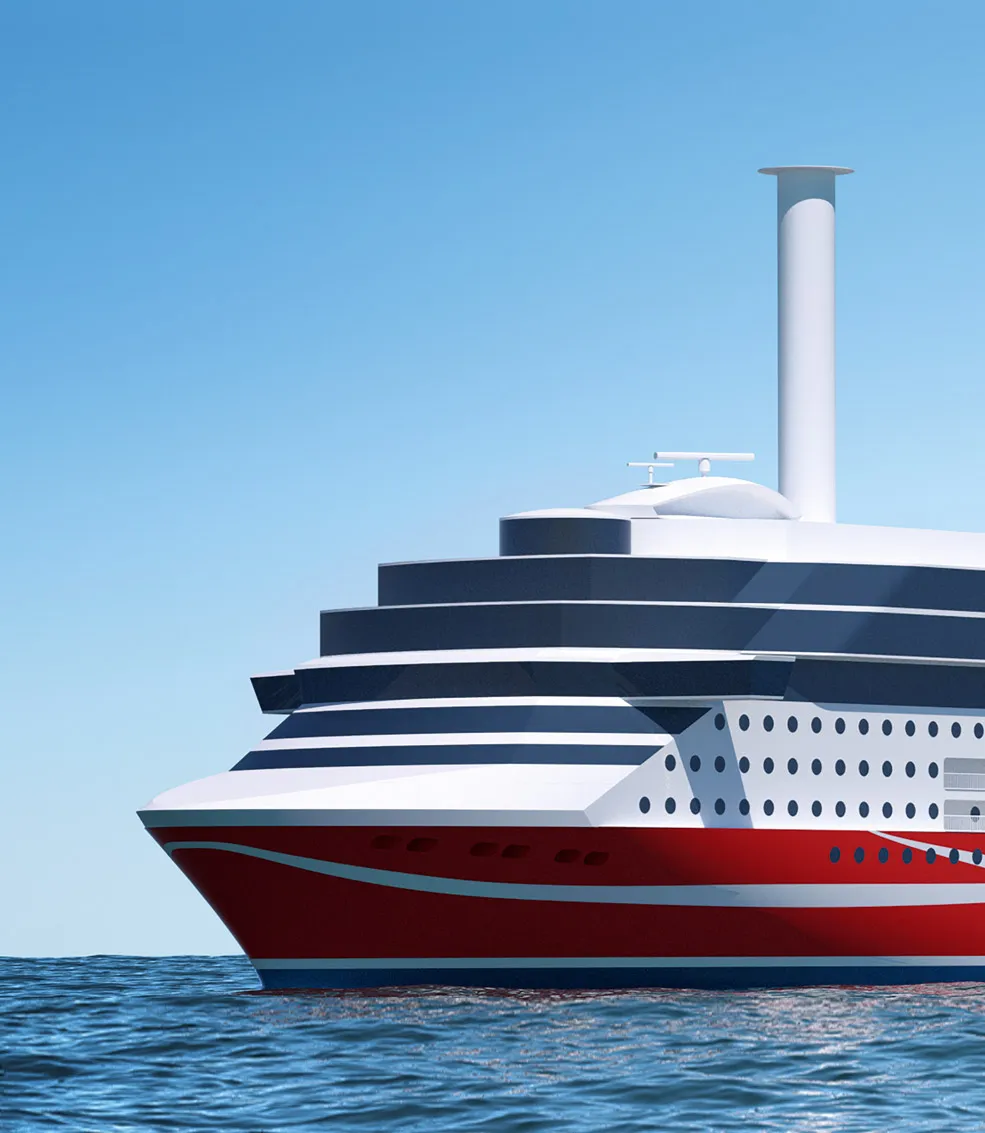Continuing the efficiency squeeze
The Finnish ferry company Viking Line has challenged Deltamarin to come up with a new design concept for a ro-pax vessel that exceeds the best current energy-efficiency levels. The resulting ten per cent saving potential is very promising and construction will begin soon. DNV GL is on board.
When Viking Line came up with the challenge to present a design that is even more energy-efficient in relation to cargo capacity than their Viking Grace, one of the most energyefficient and sophisticated ferries on the market, Deltamarin was more than keen to take it up. For ro-pax ferries, which typically trade the same route for years, it makes sense to streamline the vessel design to match the given operational profile. Deltamarin has developed a simulation tool to better understand the behaviour of the engines over the vessel’s operation profile while accounting for local climate variations. The results can be used to optimize the auxiliary equipment on board, including economizers, waste heat recovery equipment, pumps, frequency controllers, battery packs and more. Other energy efficiency measures focus on hydrodynamics or look for ways to minimize the lightweight tonnage. A good Safe-Return to-Port strategy, an optimized fuel set-up and a well-designed execution plan for the building project are important factors as well. Automation harbours further opportunities for energy efficiency enhancements, for example in the areas of big data handling, crew decision support and routine operations on board such as berthing assistance, as Nina Savijoki, Sales Manager at the Finnish design office Deltamarin, explains.

Skilled teams
A number of joint workshops held by Deltamarin, Viking Line and DNV GL during the design stage for the new Viking ferry yielded very promising results: the new concept will be ten per cent more energy-efficient than Viking Grace. “DNV GL has provided good support throughout the concept development and continues to do so during the current hull development stage,“ says Ulf Hagström, Senior Vice President, Marine Operations & NB at Viking Line. “We want to have a skilled team on our side during the design and construction processes,” he underscores. Nina Savijoki from Deltamarin agrees that early cooperation between class, owner and designer will speed up the basic design process by establishing a mutual understanding of the approval criteria for the solutions applied.
The new ro-pax vessel for Viking Line will be 218 metres in length and have a gross registered tonnage of about 63,500 tonnes. It will have a passenger capacity of 2,800, and the combined length of its cargo lanes will be about 1,500 metres.
The passenger ship building market is experiencing an interesting time: while traditional, specialized yards have great order books, the lack of orders for other ship types forces many reputable, highly qualified yards to look for revenues in new market segments. Several yards have shown an interest in ferry and ro-pax orders, and some owners have already decided to take a chance and contract yards that have yet to gather experience in this segment. For its new design concept Viking Line, supported by Deltamarin, decided to place the order at Xiamen, as was confirmed this summer. “We chose Xiamen because they had the right attitude and were able to demonstrate that they have thought through the process of how to build a modern cruise ferry,” Ulf Hagström from Viking Line explains his company’s decision. “Our role is to support the owner and yard beyond the traditional vessel design by providing advice in additional areas such as project planning and construction support. Deltamarin, as a design office, is able to work with any yard, whether it is experienced or just entering the market,” says Nina Savijoki, adding that Deltamarin is looking forward to cooperating with Xiamen again. The yard built the world’s highest capacity pure car and truck carrier series for Höegh Autoliners, classed by DNV GL. The engineering and pre-construction project management support will be provided by the Deltamarin offices in Finland over an estimated 12-month period. Supervision and other construction support services will continue until the planned delivery of the vessel in 2020.
“Our intention is to run the vessel on liquefied natural gas (LNG),” said Jan Hanses, CEO of Viking Line. “Great emphasis has been placed on the planning work for environmentally sound solutions, including innovative, energy-efficient applications. The vessel will be equipped with two 24-metre Flettner rotor sails from Nordpower, which will save about 435 tonnes of LNG annually.”

Optimized consumption
The ship will have six Wärtsilä 31DF medium-speed main engines on board, a type described by Guinness World Records as “the most efficient four-stroke engine in the world”. The engines will deliver an average speed of 22.1 knots. The vessel will also be the first to feature LNG Cold Recovery. This technology recycles the ultra-low temperature of the LNG fuel, which is stored at -163 °C, for freezer and cold-storage use. All in all the vessel will use ten per cent less LNG per year than Viking Grace, and 22.6 per cent less per lane metre.
The ship will serve the Finland-to-Sweden route connecting Turku, the Åland Islands and Stockholm as part of the European Union’s Motorways of the Seas project.
